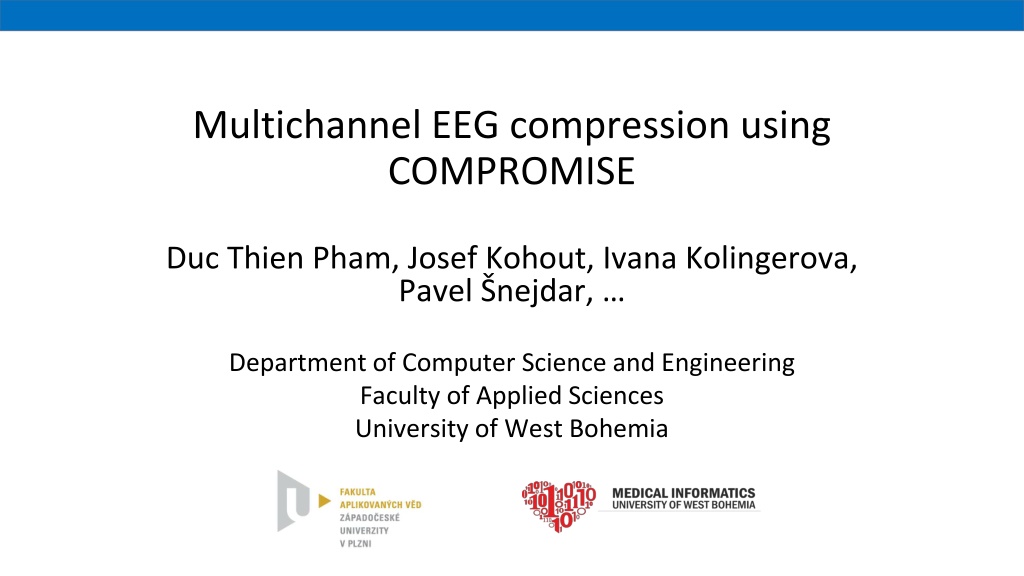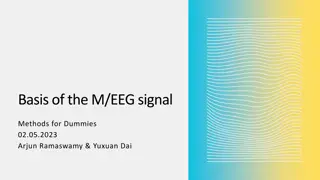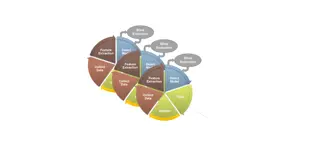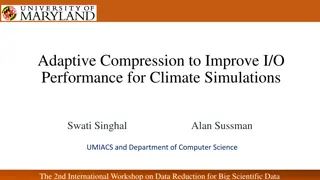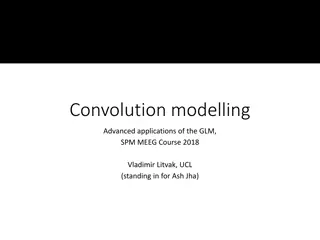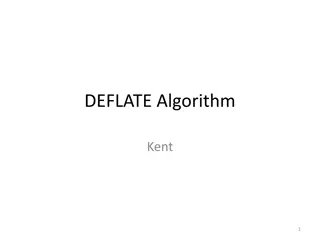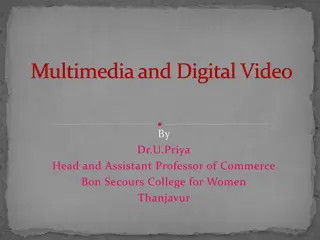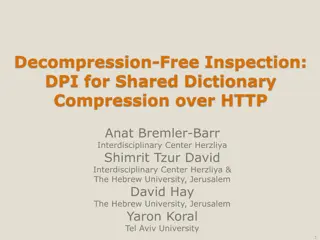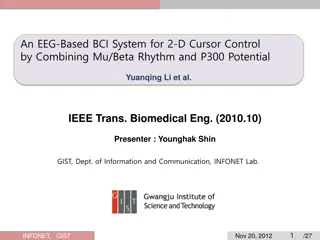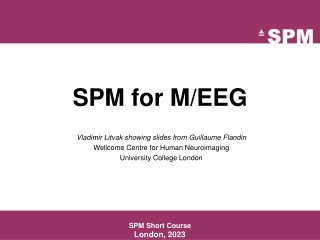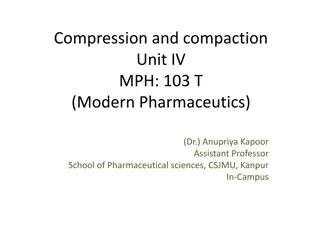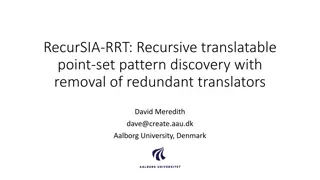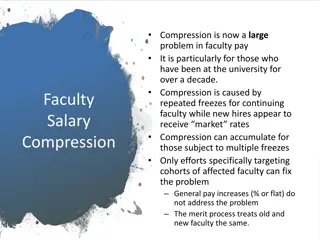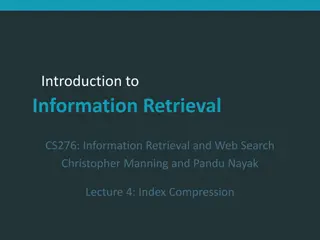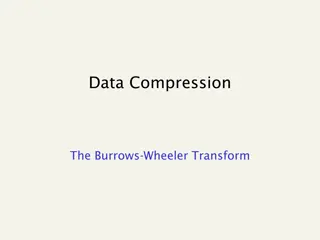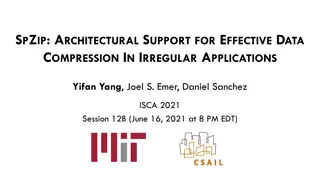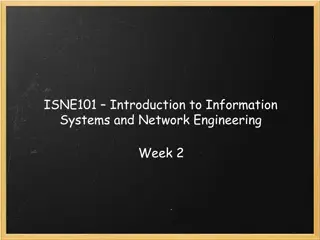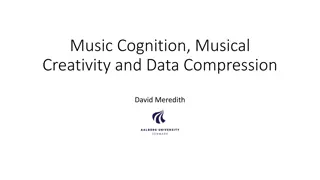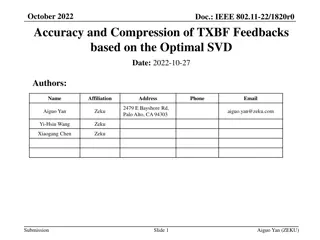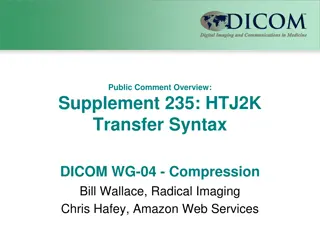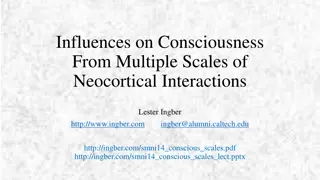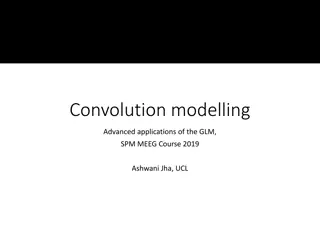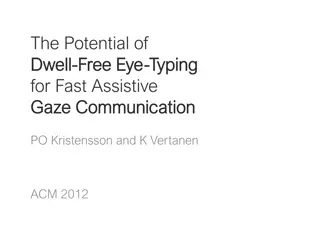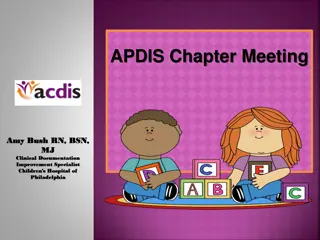Multichannel EEG Compression Using COMPROMISE Study
A study on multichannel EEG compression using COMPROMISE by Duc Thien Pham, Josef Kohout, Ivana Kolingerova, Pavel Nejdar from the Department of Computer Science and Engineering, Faculty of Applied Sciences, University of West Bohemia. The study covers datasets, methods, and discussions related to EEG signal compression, involving experiments, training, flash suppression, and stimulus frequency tagging. It also provides a detailed description of marks in EEG recordings reflecting various experimental conditions.
Download Presentation

Please find below an Image/Link to download the presentation.
The content on the website is provided AS IS for your information and personal use only. It may not be sold, licensed, or shared on other websites without obtaining consent from the author. Download presentation by click this link. If you encounter any issues during the download, it is possible that the publisher has removed the file from their server.
E N D
Presentation Transcript
Multichannel EEG compression using COMPROMISE Duc Thien Pham, Josef Kohout, Ivana Kolingerova, Pavel nejdar, Department of Computer Science and Engineering Faculty of Applied Sciences University of West Bohemia
Multichannel EEG compression using COMPROMISE 1. DATASET 2. METHOD 3. DISCUSSION 2
Multichannel EEG compression using COMPROMISE 1. DATASET NUDZ dataset: 25 subjects Face and house stimuli EEG signal (256 electrodes) Binocular rivalry 3
Multichannel EEG compression using COMPROMISE 1. DATASET Experiment Training - Replay Flash suppression - Binocular rivalry Experiment Trials Nonriv Rest Total Trials Rest Non Flash/Br Total Total Min 80 5 4 720 50 4 2 20 1300 2020 33,67 4
Multichannel EEG compression using COMPROMISE 1. DATASET Stimulus frequency tagging Face: 8.57 HZ House: 6.67 HZ 5
Multichannel EEG compression using COMPROMISE 1. DATASET Description of marks in the EEG recording Marks Description Target/Non target begi Start of experiment or block HRep Presentation of the house in the replay block Target FRep Presentation of the face in the replay block Target RFix Fixation cross in the replay block Hous Report subject - I see a house Target Face Report subject - I see a face Target Neut Report subject - undefined content SFix Fixation cross in flash suppression block SEnd End of the trial in the flash suppression block Hrs1 House on the right as the first stimulus Hrs2 House on the right as second stimulus (flash suppression) Hls1 House on the left as the first stimulus Hls2 House on the left as second stimulus (flash suppression) Frs1 Face on the right as the first stimulus Frs2 Face right as second stimulus (flash suppression) Fls1 Face left as first stimulus 6 Fls2 Face left as second stimulus (flash suppression)
Multichannel EEG compression using COMPROMISE 2. METHOD 2.1. Proposed method 7
Multichannel EEG compression using COMPROMISE 2. METHOD 2.3. Encoder Feature Selection and Residual Determination: Use feature selection techniques, such as filter, wrapper, or embedded methods, to rank and select channels based on their contribution to discrimination between house and face stimuli. Reduce the size of the data by encoding the difference (residuals) between the original EEG signal and the predicted values based on the selected features. Compression of Residuals and Features: Apply a compression algorithm (like ZPAQ or Fourier, Wavelet Transform) to both the residuals and selected features. The compression process aims to reduce the size of the data representation while retaining critical information for face and house classification. 8
Multichannel EEG compression using COMPROMISE 2. METHOD 2.2. EEG processing Filtering: Apply bandpass filters to isolate frequency bands. Filtering can help remove noise and artifacts. Downsampling (if needed) Feature Extraction: Time-Domain Features: Extract statistical measures such as mean, variance, skewness, and kurtosis from the EEG signal within each epoch. Frequency-Domain Features: Apply Fourier transforms to analyze frequency components. 9
Multichannel EEG compression using COMPROMISE 2. METHOD 2.4. Decoder Expansion of Residuals and Features: Decompress the residuals and features to reconstruct the compressed representation. Reverse Channel Reduction (if applicable): Reconstructed signal: Utilize the expanded residuals and features to reconstruct the original EEG data. 2.5. Loss A loss function compares the reconstructed signal to the original signal to update the weights of both the compression and the expansion at the same time. Using Mean Squared Error (MSE). 10
Multichannel EEG compression using COMPROMISE 3. DISCUSSION 11
Multichannel EEG compression using COMPROMISE Thank you for your attention
